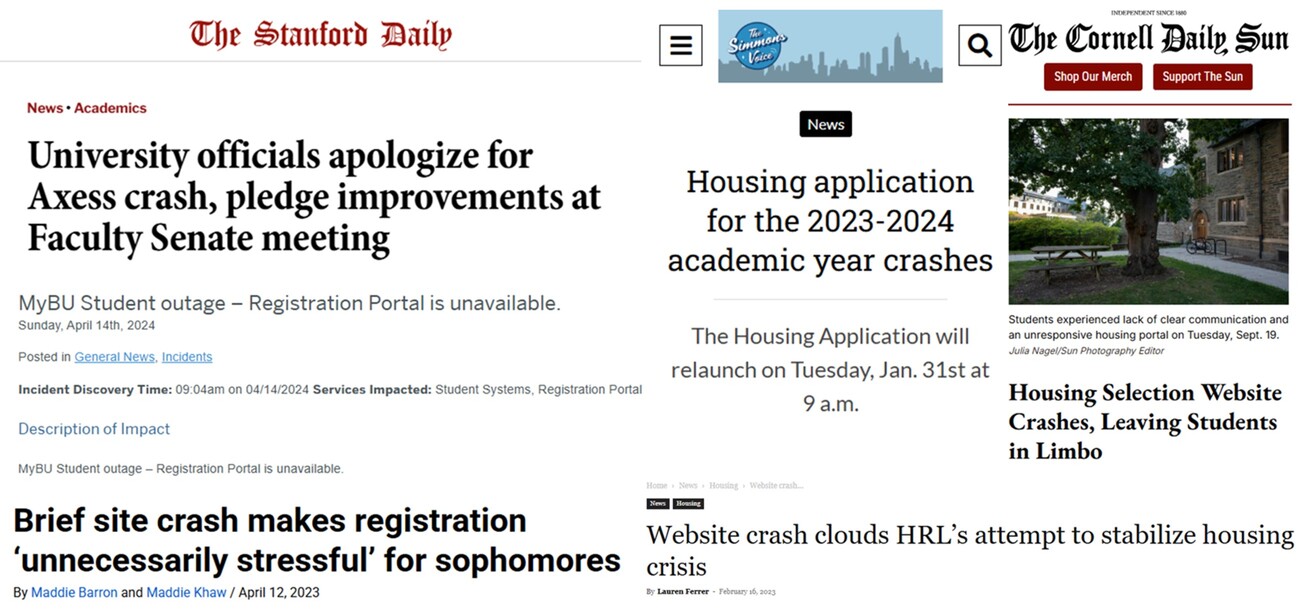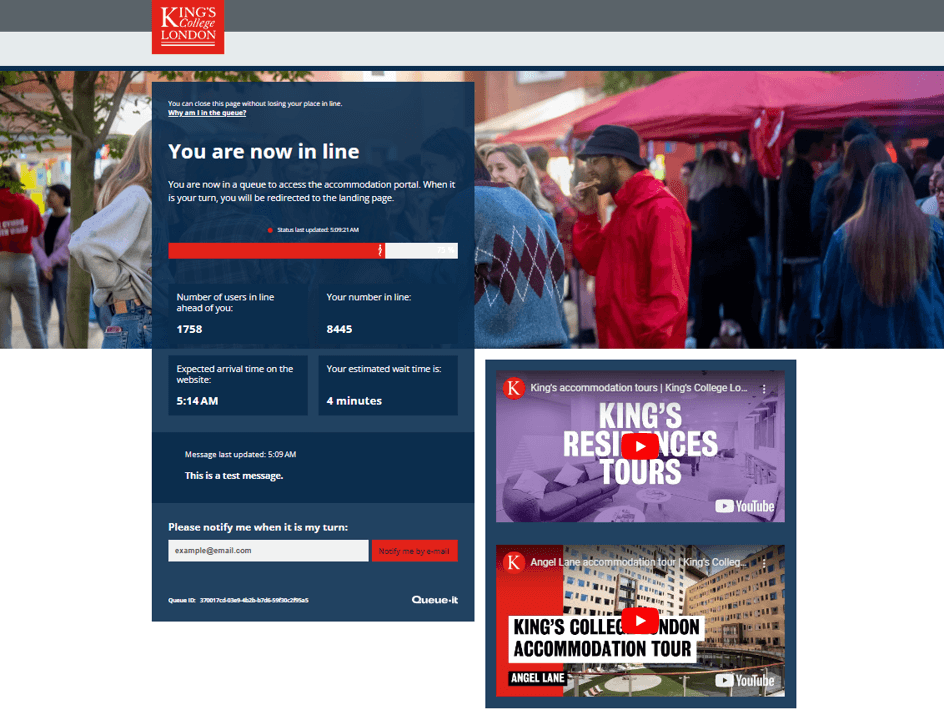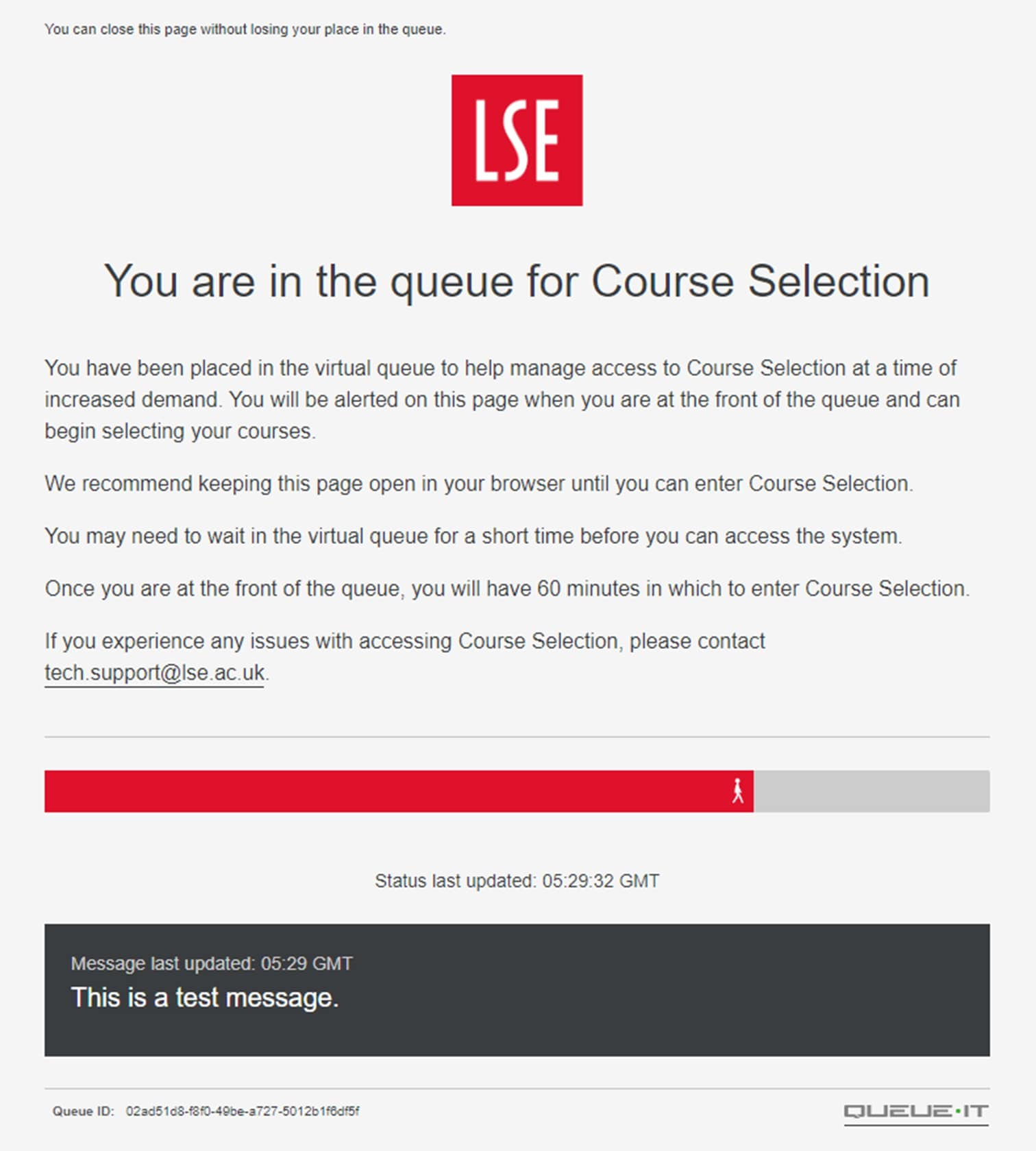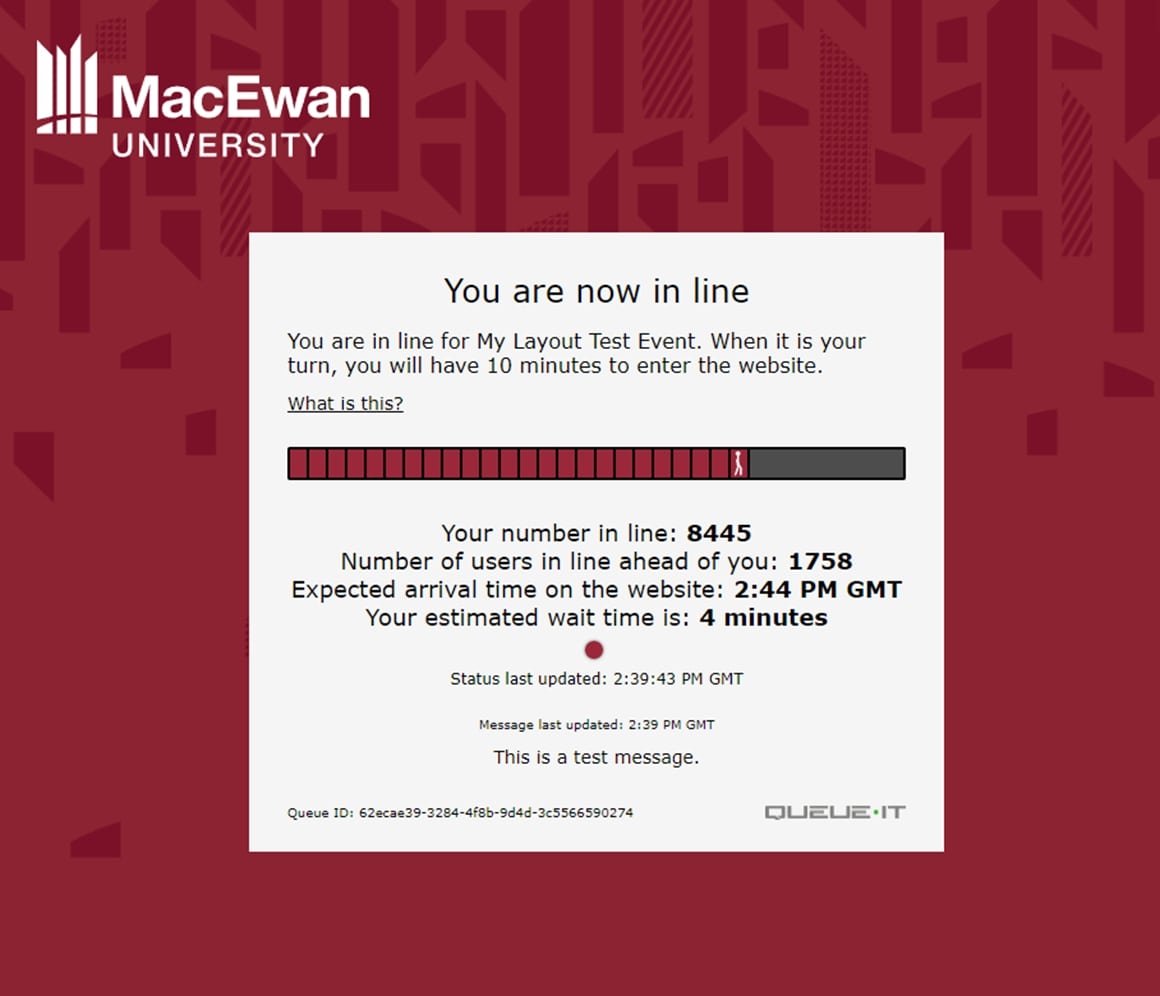How leading universities run fair & reliable registrations using online queues

When registration day hits, university websites face intense pressure from thousands of students racing to claim housing and classes. But crashes, slowdowns, and system failures don’t have to be part of the experience. Discover how leading institutions like LSE and MacEwan University use Queue-it’s online queue system to deliver a fair, smooth, and stress-free registration for every student.
Each year, university housing and class registrations bring with them a surge of digital activity as students race to secure their spots. And each year, educational institutions grapple with overloaded systems, frozen portals, and frustrated students venting online.
For universities and their students, housing and class registration portals aren’t just a website. They’re a key touchpoint in the student experience—one that can shape what students learn, where they live, and how they trust their university. That’s why leading educational institutions use virtual waiting rooms to keep their portals up and running and ensure fair access during peak periods.
Educational institutions across the globe use online queue systems, or virtual waiting rooms to protect their websites from surging traffic and ensure a fair and reliable online experience during high-demand registrations.
Many universities have learned the hard way that web traffic during major registration periods can be unpredictable and intense. Sudden traffic spikes can overwhelm services, databases, and bottlenecks like ERP systems, causing registration portals to crash or fail when they’re at their most visible.

Stanford, Cornell, Boston University, Emerson College, Simmons University, University of Miami—sudden surges in traffic during registrations have caused all these institutions’ websites to produce errors, slow down, or crash. These problems:
- Damage the student experience: Registering for classes or housing, for many students, is among their first interactions with your institution. When portals crash and slow down, the student experience starts with frustration and disappointment.
- Threaten fairness: System failures are often intermittent and kick students out at random, sometimes just seconds before they confirm their registration. When supply is limited, this creates an unfair experience for students—one that can shape how they spend their time at university.
- Drain resources: When registration portals crash, stressed out students (and their parents) flood university support centers, trying to secure their spots or get explanations for the problems.
That’s why major institutions like The London School of Economics and Political Science, MacEwan University, Swinburne University, and King’s College London, protect their high-profile registrations with a virtual waiting room.

King's College London's virtual waiting room
Queue-it's virtual waiting room gives you complete control over the flow of traffic. The system enables you to:
- Ensure performance: The virtual waiting room captures sudden surges in web traffic before they hit your site and allows you to control the rate at which visitors get access, ensuring you never exceed the technical capacity of your systems.
- Deliver fair access: Queue-it provides sophisticated fairness mechanisms by ensuring first-come-first-served site access and allowing visitors to get notified when it’s their turn.
- Improve student experience: With an online queue, you can replace the frustrating experience of a website crash or slowdown with transparent and controlled access, including detailed wait information on a branded page that can feature important info like registration deadlines and necessary documentation.
Virtual waiting rooms work by automatically redirecting online visitors to a waiting room (online queue) when they enter a protected part of the user journey, for example visiting a landing page or proceeding to a registration form.
Visitors get seamlessly flowed from the site or page to a branded waiting room like the one below, where they see their number in line, their estimated wait time, and a progress bar. They experience a short, informed wait, then they’re flowed back to your site at the rate it can handle in a fair, controlled order.

Students are accustomed to Queue-it's waiting rooms from experiences like buying tickets from Ticketmaster, shopping for sneakers at SNIPES, or registering for public services like vaccines. They know and understand how online queuing works.
While organizations often customize their waiting rooms both in style and in URL to look like the original site, the visitors in them are hosted on the virtual waiting room provider’s servers. This means no strain is placed on the target website’s servers while visitors wait for access.
Controlling the flow of traffic not only keeps your site online, it can also save you time and money. In a recent survey, Queue-it customers reported a 38% decrease in server scaling costs and a 51% decrease in the number of staff needed on-call during registrations.
Queue-it customers report a 38% decrease in server scaling costs and 51% decrease in the number of staff needed on-call during registrations.
Let’s look at some real-world examples that show how virtual waiting rooms prevent education website crashes and ensure fair access during large spikes in activity like class and housing registrations.
LSE uses Queue-it’s virtual waiting room to ensure fair and smooth access to their highly competitive class registrations.
Their Head of Data and Development, Aaron Donaldson, said “The queuing system worked exactly as we hoped it would. It helped us to successfully mitigate known issues with our code by managing the number of students accessing our systems at any one time. Importantly, no students were logged out of the system, and their access was managed in a fair and orderly way.”

MacEwan uses Queue-it to keep their systems online during course registration without investing huge sums into new hardware.
Their Director of ERP Applications, Vasmi Ramanadham, said, “I have no hesitation recommending the virtual waiting room as a solution for universities facing issues managing course registrations. It streamlined the process of managing peak load and that translated to a better student experience, which is key for any university that puts students first.”

King's College London uses Queue-it to protect their housing registration portal, achieving an 80% reduction in support requests compared to previous years.
Their Physical Environments Systems Manager, Steve Barlow, said, “If you have a website resource that struggles to handle peak traffic, then Queue-it is a must-have. You can manage the traffic, you can manage the expectations, you can manage the overall experience.”
Swinburne uses Queue-it to protect their class registration portal, handling over 25,000 students.
Their Application Integration Development Manager, Darren Blizzard, said, "Being able to manage the load was the biggest benefit of using Queue-it. It’s quite a seamless experience for students. They actually get feedback and they can see what’s happening with their enrollment."
They do. But at scale, every system breaks.
There is no “too big to fail” in the world of websites. Amazon, Walmart, Apple, the IRS—surging web traffic has taken all of them offline.
If you’re preparing for a surge in traffic during class or housing registrations, you’ll want to optimize your website in many ways, including scaling your systems.
But scaling alone is expensive at best, and risky at worst. It can be:
- Expensive: Most websites are built to perform under their usual amount of traffic. Building a website that can handle huge traffic peaks that only come a few times a year is like buying a house with 10 extra bedrooms and bathrooms because your family comes to visit sometimes—it’s expensive, impractical, and unnecessary.
- Reactive: Because traffic levels are hard to predict and autoscaling takes time to kick in, your systems likely won’t be ready in the critical moment they’re needed.
- Risky: Even if autoscaling or pre-scaling could handle these surges, bottlenecks almost always emerge. Limited-availability registrations, in particular, can be extremely difficult to scale, because you need to avoid over-enrolling students or letting two students claim the same housing option.
A virtual waiting room complements your autoscaling approach and gives you confidence your site will perform by controlling what other crash-prevention tactics can't: the flow of traffic to the site.
“The issue with just scaling up is that there’s always a limit to how many servers we can buy. And there’s also the question of the viability of investing in these additional servers that only get used for half an hour on a few days each year. Public institutions like us just aren’t in a position to do something like that.”
Vamsi Ramanadham, Director of ERP Applications

Since class and housing registrations were brought online, each year has seen new universities struggling to handle the demand. “We weren’t expecting so much traffic,” is no longer an excuse students will accept.
If you want to preserve students’ trust, you need to prepare your site for the fast-approaching surge in class and housing registrations.
With a virtual waiting room solution like Queue-it, you get confidence and peace of mind knowing this surge won't turn into a technical crisis. You can keep your site online, control your scaling costs, and save your reputation and your resources.
Queue-it is the market leading virtual waiting room solution, having served over 75 billion users across 172 countries. With a mission to deliver online fairness to all, Queue-it empowers the world’s biggest businesses to perform on their busiest days. When Ticketmaster, Zalando, and Home Office UK need to manage high-demand events, they turn to Queue-it. Book a demo today and start preparing for your next high-profile sale or event.